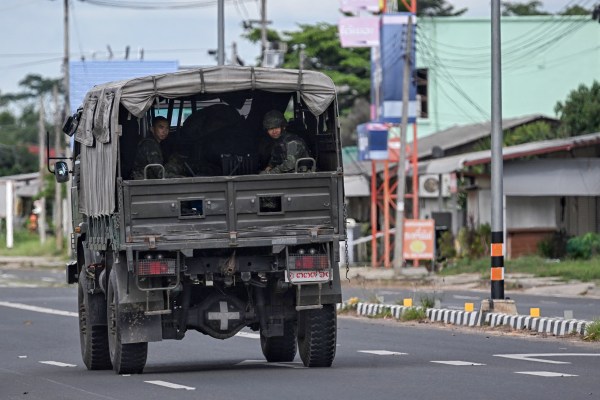We all remember the shortages that defined the early days of coronavirus lockdowns. Retail outlets responded as quickly as possible to shortages of toilet paper, hand sanitizer, and disinfectants. But then the supply chain disruptions hit the meat department of supermarkets everywhere. Consumers encountered empty coolers instead of packages of chicken or steak, and what was available was more expensive. Frustrations mounted.
But customers weren’t the only angry ones; ranchers are also mad. It’s a little counterintuitive—hamburger prices increased from as low as $1.84 a pound to more than $6 a pound—so ranchers’ anger doesn’t make much sense to the average American. Why wouldn’t the producers of hamburgers benefit from high prices for hamburgers?
The answer is complex but important. The market for beef and pork isn’t just one market, but several. It is possible for the market for live cattle ready for slaughter to be in surplus, while the retail market is struggling to satisfy demand. That’s exactly what has happened during the pandemic: At the same time that retail prices spiked, farmers suffered from falling prices for their cattle. The extra money you paid for your ground beef went not to ranchers but to meat packers.
Farmers, and the groups that represent them, are very conscious of that price gap, between farm and retail. Having been here before, we have a long list of policy solutions at the ready to improve producers’ position in the marketplace. President Trump may have given renewed life to populism, but populism down on the farm has been around almost as long as cockleburs and grasshoppers. Most of the ideas presently rattling around coffee shops and convenience stores where we farmers gather have been tried before, and most have fallen by the wayside for perfectly good reasons, but we seemed destined to repeat every farm policy mistake of the past.
Today’s populists, who come to their populism by way of the New York real estate market and Yale law school, have replaced the original Prairie Populists, but their rhetoric is just as heated. 150 years ago, Mary Elizabeth Lease supposedly said that “farmers should raise more hell and less corn.” The enemy then was railroads, and now processors, but we’re still raising hell.
The contrast between farmers profits and beef packer margins has been stark. On April 2, 2020, cattle feeders lost about $25 per head of cattle, while meat packers were making about $370 per carcass. A week later, packer margins had increased to $561 per head. The farm press is full of reports from cattle feedlots of losses reaching several hundred dollars a head. A revolt in farm country has been the result. And now ranchers—and their allies in Congress—seek to remedy this situation
Iowa Sen. Charles Grassley has reintroduced a bill that would require 50 percent of cattle to be traded in open markets, so as to bring increased transparency to pricing. Presently, unlike traditional agricultural markets, most transactions between buyer and sellers of market-ready cattle are private.
Meanwhile, a large and growing contingent of farmers and farm groups would like to reinstate labeling of beef and pork by country of origin, or COOL, on the belief that the American consumer will seek out domestically produced food and willingly pay a premium for food produced here in the U.S.
An even bigger move would be to break up the large meat packers. Most farmers support dusting off antitrust laws to do just that, a little trust busting 120 years after the beginnings of the last great progressive wave. President Trump at a recent press availability spoke about ending trade agreements that allow cattle imports, remarking that we have “a lot of cattle in this country.” The trade agreement in question here would be the USMCA, which doesn’t even go into effect until July 1. That would be a land speed record for throwing out an agreement, but the White House later walked back those remarks.
Let’s look at how some of these ideas have worked out in the past.
Presently, about 80 percent of beef is traded by formula or grid pricing, with no public price reporting. Formula pricing rewards producers for the quality of their animals and the practice is widely credited with improving the quality of beef on offer to consumers, by increasing uniformity of cuts of beef, as well as their tenderness. Grassley is concerned that the lack of transparency in the formula driven part of the market leads to lower prices and a paucity of bids. Whatever its merits, the Grassley bill, which the senator has introduced since 2002, will limit market participants’ ability to choose how they buy and sell cattle.
The Justice Department recently indicted four chicken industry executives for price fixing. Tyson, a large player in chicken processing, has announced that it will cooperate in the Justice Department probe of its competitors. Tyson thereby avoids prosecution, according to news reports, but not coincidentally improves its competitive position. Unlike the other meat complexes, poultry processors market much of their product directly to consumers. Far better to be a cooperating witness than an indicted conspirator in the eyes of the consumer. If, as the Justice Department alleges, price competition no longer occurs in the chicken industry, we can be confident that no-holds-barred legal jockeying is alive and well.
One hundred years ago, the five biggest meatpackers ended decades of litigation by agreeing to an antitrust settlement with the Department of Justice. In 1980, the top four firms in the industry had about 36 percent of the market. Today, the top four have 85 percent of the market, a level of market concentration higher than the level that sparked the antitrust litigation a century ago. Lawsuits were filed as long ago as 2015 alleging price manipulation in beef markets, and a slew of investigations have begun in the last few months. On June 4, the Justice Department sent subpoenas to the four largest meat packers.
Now let’s talk about origin labels. In 2009, seven years after Congress passed legislation requiring the labeling of country of origin for a number of foodstuffs, including meat, the requirements finally went into effect. Canada and Mexico immediately complained to the World Trade Organization, arguing the labeling requirement discriminated against foreign livestock. This was not only true, but the whole point of the exercise. After six years of legal back and forth, the WTO found against the U.S. in 2015, and granted Canada and Mexico the ability to retaliate with more than $1 billion in duties against U.S. exports. Congress quickly repealed COOL, and, while the labeling requirements for most of the items covered by the original COOL legislation remain in place, no labeling is required for beef and pork.
Because of changes in cattle prices around the time COOL was in effect and then repealed, it’s easy to understand why the attractiveness of the policy to beleaguered cattle producers support such a policy. In 2012, the U.S. suffered from a historic drought. Ranchers and farmers had no grass for their cows and were forced to send cows to slaughter. It takes two years or so from the birth of a calf until it is ready to market. So, the diminished supply of slaughter-ready animals caused by the 2012 drought led to record prices for beef in 2014 and 2015, just in time for the full implementation of COOL. Prices collapsed shortly after the repeal of COOL, as farmers rebuilt their herds and increased production in response to higher prices. Or perhaps consumers lost their taste for beef that no longer sported a label attesting to its domestic content. The Department of Agriculture has studied the issue, and found little consumer response to country of origin labels, but to producers, the collapse in prices and the repeal of COOL are not a coincidence. They are proof of a tremendous reservoir of untapped beef demand from consumers who refuse to eat imported hamburgers.
It’s far from certain that any antitrust investigations, rules telling market participants how to contract, or the reimplementation of labeling are likely to accomplish their stated goals, but the problem down on the farm is real, and it is urgent. The trade war with China has driven profits down for American farmers to the benefit of Brazlian farmers, prompting a farmer friend of mine to joke that we’ve managed to make Brazil great again. That self-inflicted wound has been followed by the pandemic, which has disrupted supply chains and cratered the ethanol market. Dairy farmers have been forced to dump milk, pig and chicken producers to euthanize animals, and farm prices are at lows not seen in this century. Government farm subsidies have kept farmers afloat, and farm subsidies that University of Missouri economist Pat Westhoff estimates that farm subsidies will be near $50 billion this year, well over half of a total farm income of $91 billion. An industry that is depending on a continued de facto adoption of modern monetary theory is an industry with an uncertain future.
I’ve had a number of conversations with fellow farmers in recent weeks, all of whom have made the argument that the answer to our economic problems and the best defense against the pandemic-caused disruptions is total self sufficiency in the production and consumption of food and most other goods as well. Critics of food and agricultural imports compare our food supply issues to the recent controversy over medical supplies, arguing that food imports threaten national security.
What we’re seeing is a sort of updated populism here in farm country. Few of us have read William Jennings Bryan and his Cross of Gold speech, but all of us are onboard with this famous line: “Burn down your cities and leave our farms, and your cities will spring up again as if by magic; but destroy our farms and the grass will grow in the streets of every city in the country.”
However, we’re on board for that part, but we’ve absolutely reversed field on the Prairie Populists’ call for lower tariffs. Our predecessors understood that tariff protection benefits industry while harming the consumer and the small farmer. They believed that low tariffs kept prices and profits down for big business and helped secure foreign markets to absorb the bounty of America’s farms. Now, tariffs are seen by most of my neighbors as benefitting workers, and imports are seen as a threat to not only to our industry but to U.S. national security.
Self-sufficiency is the buzzword, egged on by political leaders who think collapsing international supply lines can be accomplished by next Tuesday and done without harm to anybody except regimes that don’t have our best interests at heart. Farmers are a patriotic lot, and we support foreign and economic policy that treats China as a dangerous adversary. But a successful policy would, it seems to me, try to isolate China rather than isolate the U.S., and particularly the U.S. agricultural sector. We should sign on to the Trans-Pacific Partnership trade agreement immediately, improving trade with China’s neighbors, and helping to find a home for the 80 percent of our cotton crop that used to be exported, or the 50 percent of our soybean crop that is grown for foreign consumption.
Perhaps the Justice Department investigation will find collusion and price fixing in the meat market. If so, then the response should be swift and powerful, and the full antitrust powers of the federal government should come into play.
Antitrust actions increase competition where markets have been overwhelmed by anti-competitive behavior allowed by monopoly power. Most of the other solutions advanced in response to our present agricultural distress will lessen competition and lead to higher consumer prices and a smaller agricultural sector.
COOL will increase costs in the supply chain for beef, as segregating foreign products and U.S. products is difficult and costly. We’ll also face increased tariffs on goods we export to Canada and Mexico, as those two countries implement the tariffs that the WTO will allow. Although, since legislation has been introduced to withdraw the U.S. from the World Trade Organization, perhaps our former concerns about being a participant in the international trading system that’s been laboriously constructed over the past 70 years are outdated.
Ending imports of beef is certainly an option, as imports are only about 10 percent of the market, and U.S. ranchers can easily supply American demand for beef. Of course, one of the main beneficiaries of that course of action will be domestic beef packers, who will no longer have to compete with foreign firms.
We can do all those things, but we’ll be consigning U.S. farmers and taxpayers to a difficult and painful future. Without the opportunity to maintain and increase exports of U.S. farm products, we have an agricultural sector that is fully a third too large. The only real answer to the populist revolt down on the farm is to follow the call of the original Prairie Populists, keep tariffs low, and trade with any who will trade with us.
Blake Hurst is president of the Missouri Farm Bureau.
Photograph by William Campbell/Corbis/Getty Images.






Please note that we at The Dispatch hold ourselves, our work, and our commenters to a higher standard than other places on the internet. We welcome comments that foster genuine debate or discussion—including comments critical of us or our work—but responses that include ad hominem attacks on fellow Dispatch members or are intended to stoke fear and anger may be moderated.
With your membership, you only have the ability to comment on The Morning Dispatch articles. Consider upgrading to join the conversation everywhere.